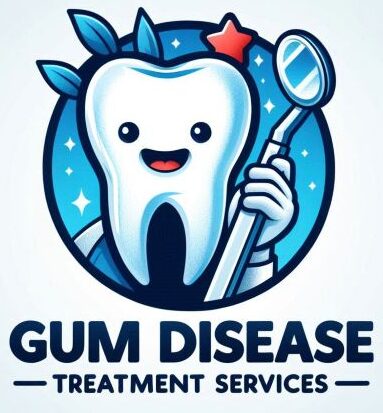Until there is discomfort, bleeding, or tooth loss, oral health frequently does not receive the attention it needs. Although the concept of gum disease is widely known, very few individuals are aware of the distinction between its early and later phases. Although they may sound similar, gingivitis and periodontitis—two of the most often used terms related to gum disease—have very distinct severity, symptoms, and requirements for treatment.
Knowing these distinctions is essential to preserving your teeth and gums for the rest of your life, and it goes beyond simple dental knowledge. Early detection of gum disease can be the difference between expensive dental work and a simple cleaning. We’ll explain the differences between gingivitis and periodontitis in this article, along with tips for preventing both.
What Is Gingivitis?
The first and most prevalent type of gum disease is gingivitis. Plaque, a sticky bacterial film, accumulates on your teeth alongside your gum line, causing it. Inflammation and irritation of your gums can result from improper brushing and flossing.
Due to its frequently minor symptoms, gingivitis is easy to ignore. Some inflammation, swelling, or pain in your gums may be apparent. Bleeding when brushing or flossing is one of the clearest indicators. The deeper tissues that support your teeth are usually unaffected by gingivitis, even with these symptoms.
Well, the good news is, you can reverse gingivitis. Your gums can be restored to a healthy state with regular dental cleanings, brushing, and flossing. However, the actual issue begins when you ignore the gingivitis problem.
What Is Periodontitis?
If gingivitis is not treated, it can worsen and develop into periodontitis, a more dangerous condition. This type of gum disease is more severe and affects not just the gums on the surface but also the bone and connective tissue that support your teeth.
A persistent infection called periodontitis makes your gums separate from your teeth, forming pockets that encourage the growth of bacteria. Tooth loss may eventually ensue from the immune system’s reaction to this infection, which can cause bone and tissue to break down.
Unfortunately, periodontitis cannot be completely reversed like gingivitis can. More severe signs can include shifting or loose teeth, persistent foul breath, receding gums, and even abnormalities in your bite. More drastic professional treatments, like extensive cleanings (scaling and root planing), prescription drugs, or surgery, are frequently needed to treat periodontitis.
Crucial Distinctions Between Periodontitis and Gingivitis
Gingivitis and periodontitis are both caused by bacteria accumulation and poor dental hygiene, but they are very different in terms of their effects, risks, and treatments.
To better understand the main differences, check out the comparative chart below:
| Feature | Gingivitis | Periodontitis |
|---|
| Severity | Mild | Moderate to severe |
| Reversibility | Yes, with proper oral care | No, damage is permanent |
| Symptoms | Red, swollen, bleeding gums | Gum recession, loose teeth, bone loss |
| Pain Level | Often painless | May cause discomfort or pain |
| Gum Involvement | Surface-level inflammation | Deep tissue and bone involvement |
| Treatment Needed | Improved hygiene, dental cleaning | Deep cleanings, possible surgery, medication |
| Risk of Tooth Loss | Low if treated early | High if untreated |
It is evident from this chart that preventing long-term effects requires early detection of gum disease when it is currently in the gingivitis stage. Oral care is much simpler and cheaper at the gingivitis level than at the periodontal level.
How to Prevent Both Gingivitis and Periodontitis
Preventing gum disease before it begins is the best approach to avoid any problems with your oral health. Regular dental checkups and the adoption of consistent oral hygiene care practices are key to preventing both gingivitis and periodontitis.
Here are a few tried-and-true preventative techniques:
- Brush your teeth twice daily using a soft-bristled toothbrush and fluoride toothpaste.
- Floss every day to remove food and plaque from between teeth where your brush can’t reach.
- Use an antimicrobial mouthwash to reduce bacteria and control plaque.
- Avoid tobacco products, which can increase your risk of gum disease significantly.
- Eat a balanced diet rich in vitamins C and D to support gum health.
- Schedule regular dental cleanings and checkups, typically every six months or as recommended.
Early detection has a significant impact on your gum health. You have the best chance of curing gum disease before it worsens because dentists are able to detect it in its early stages.
Take Charge of Your Gum Health
The true victory in the conflict between gingivitis and periodontitis is prevention. Although the underlying cause of both illnesses is the bacterial accumulation. Their results are very different. If you take action, gingivitis is totally reversible and an early warning indication. Conversely, periodontitis is a more severe and frequently irreversible condition that can result in tooth loss as well as other health issues.
The message is simple: your gums have already whispered, so don’t wait for them to shout. When combined with routine dental checkups, taking a few extra minutes each day to take care of your teeth can help you avoid future issues that could be unappealing, costly, and avoidable.
Thus, don’t ignore it the next time you notice a trace of blood on your toothbrush or your gums feel a bit sensitive. Be sure to pay attention to what your gums have to say.
“Here’s a little transparency: Our website contains affiliate links. This means if you click and make a purchase, we may receive a small commission. Don’t worry, there’s no extra cost to you. It’s a simple way you can support our mission to bring you quality content.”
